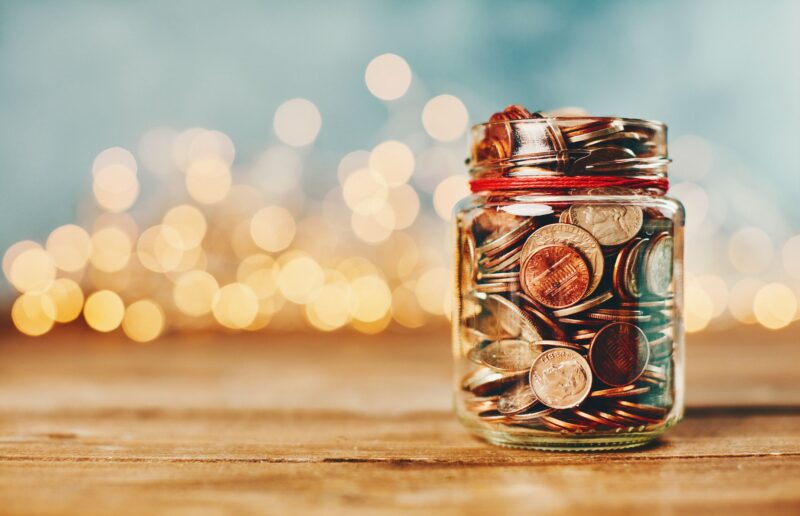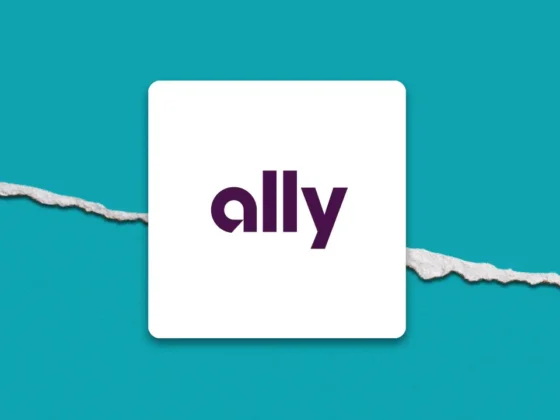Saving money in a jar is a great way to save for the future. However, it can be challenging to put away the money you want to save and then find a place that will accept your jar. Here are some tips on how to make saving money easier.
The 100 envelope money saving challenge is a fun way to save money. It can be done with envelopes or jars.
Have you ever kept a money jar or a savings jar where you kept all of your spare change as a kid? That’s exactly what I did. I scoured shops for pennies and saved nickels and dimes from my weekly duties. When I arrived home, I rushed to my room, where I could hear the money clinking against the glass.
By putting money in a jar, I was able to make long-term improvements in my financial habits. I didn’t become wealthy because of a container full of pennies, but it did teach me important financial lessons.
I began teaching economic principles to my children when they were barely old enough to count. We began by focusing on coin value and playing endless supermarket games replete with cash registers and child-sized ATMs.
We also kept glass savings jars on their dressers, like I did when I was a child. Is it true that putting money in a jar sows the seeds of financial success? Without a doubt, that is possible.
It’s simple to save money. You don’t need a lot of discipline or a lot of money. Simply empty your pockets into a savings jar and keep an eye on it as it grows.
Some may claim that putting money in jars will not result in substantial savings, but beginning small makes it simpler to accomplish your objectives.
At first, the quantity of money you save isn’t significant. It’s far easier to collect loose change than it is to collect large dollars, so start small if required.
Saving money in a jar won’t make you rich on its own, but it will help you develop new habits, improve your money mentality, and improve your money management abilities.
Saving Money in a Jar Taught Me a Few Things

What role do money jars have in achieving financial success? Assume you carry cash with you at all times. Your money is available when you go to the shop. You reach into your pocket to pay for something you wish to purchase. Regrettably, this may lead to wasteful expenditure.
We may spend money without creating a strategy when purchasing new things is too simple. It causes us to live on autopilot rather than pondering what we want from life. While this seems to be OK while we stand at the cash register, it hinders us from accumulating money or making a life plan.
How can we avoid purchasing things we don’t need? We may make it more difficult to spend. We may save loose change in money jars instead of storing cash in our pockets.
It makes no difference how much money you put away in a jar. Maybe you take out all the pennies or $5 bills you can find. In any case, you won’t have as much money accessible the next time you go to the shop.
Take a minute to consider saving every time you put coins or dollars into your money jar. You are consciously deciding not to spend with each deposit.
An activity takes an average of 66 days to become a habit. As a result, try not to stop utilizing your money jar before then. Drop those coins as often as you can, day after day, for as long as you can.
Keep in mind that money jars will not rob you of your desires. We’ll utilize them to meet our larger, long-term financial objectives.
Setting Savings Goals Using Money Jars
Money jars may assist you in visualizing your future. You may build a path to go where you want to go in life after you find out what you want out of life. So, before you start a money jar, create a list of your financial objectives.
Every dollar you make should be assigned a task as part of your money management strategy. It’s easy to waste money on things you don’t need if you don’t know what you want to accomplish with it.
How may putting money in a jar assist you in achieving your financial objectives? First, determine why you need funds. What are your plans for the money you’ve saved? We don’t need a lot of money to have a happy life once we’ve taken care of our fundamental necessities.
So, before you put money in a jar, consider why you’re saving. What do you hope your money will do for you? Do you wish to save for an emergency fund, a family trip, or courses that will teach you new skills?
Why do you work after you’ve paid your bills? What are your favorite pastimes? What do you want to do with your life?
Which objectives do you intend to achieve in the next weeks, months, or years? Which of these objectives is the most urgent, essential, or exciting to you?
If you have a partner, have a family finance meeting with them to discuss your goals. Make a strategy for your life based on the discussions you have.
What is your most fantastical fantasy? Make a list and a money jar to keep track of it. Your financial objectives guide you in deciding what to do next. What will you do with the money you save?
Before you make a money jar, do some research on your financial goals.
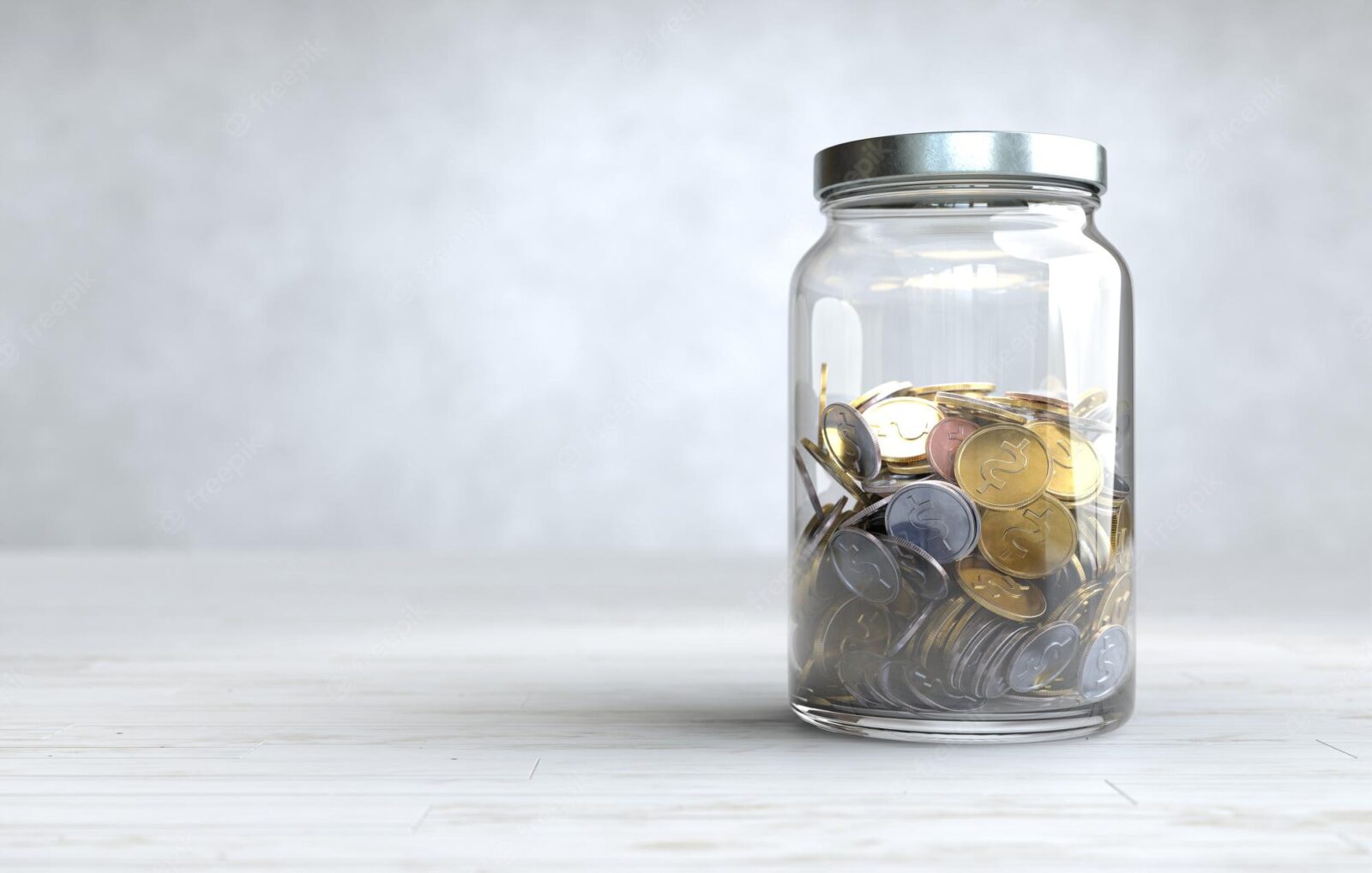
You’ll need to work out how much it will cost to accomplish your objective after you’ve established it. It’s now or never to look at your choices.
If you want to go to Hawaii, calculate out how much a plane ticket will cost, how much you’ll have to spend for accommodation while you’re there, and how much food would cost for a week.
If you want to attend an art class, check the pricing online and see how much the materials will cost.
You can find out how much you need to save by looking up particular figures.
How to Make a Money Jar (with Pictures)
Before you start constructing a money jar, do the following preparations:
- Consider the dimensions of your container.
- Look for a container that can hold the quantity of money you need to save. You can scrape together a little jar if you have a modest objective.
- If you have a huge goal, you should look for a bigger container.
Make a goal that you can achieve. The majority of us won’t be able to save tens of thousands of dollars with the money in our jars. As a result, begin with modest objectives that you can achieve. We’ll get to the more important goals later. With a small bowl of change, you can’t establish an early retirement objective.
After that, identify your objective as well as your jar. Call it a honeymoon fund, a group holiday, a performance, an advanced certificate, a trip to Tahiti, a new guitar, or anything you choose.
It makes no difference what you write on the jar. Give it a name and that’s all there is to it. Obtain a sharpie, a sticker, or a piece of paper, as well as some tape. Then state your objective aloud and see yourself accomplishing it.
Imagine yourself on the beach in Tahiti if you had a dream about it. Imagine yourself singing over a campfire if you desire a new guitar.
Print a photo of your newfound objective after putting a label on your savings jar. You may use a picture from a recent encounter or an image from the internet. For example, if you want to go on a beach vacation, look for a photo from your most recent trip to the beach.
It’s also OK if you wish to make several savings jars. Use larger jars for more expensive objectives and smaller jars for less expensive goals.
Put your savings jars somewhere where they’ll be seen. Make use of a room that you use often. That may be in your living room close to the television or on a table right next to the front entrance of your home. Make sure you stroll by this spot frequently, no matter where you put it.
On their savings jars, some individuals prefer to maintain a running total. Others wait until the container is completely filled before counting. Keeping a count can assist you in determining how far you have to travel. If you choose with this option, keep track of your totals on a piece of paper taped to your jar.
Every time you use your savings jar, visualize your financial goals.

Think about the objective you set for yourself every time you put money into your savings account. If you dedicate your money to achieving your objective, you’ll be less inclined to spend it on anything else.
Take a good look at the image pasted to the front of your savings jar if you’re tempted to spend your money on anything else. Take a moment to imagine yourself in the future. Do you need to spend your money on anything else, or will you be dissatisfied in a few months?
Money jars assist us in visualizing our financial progress. We begin to perceive progress when we see that pile of money growing, and seeing is believing.
After a time, a pattern develops from the seemingly innocuous act of putting money in a jar. You’ll give it a job instead of having cash on hand to squander. You’ll roll your pennies and save them for another day.
Is a Physical Savings Jar Necessary?
Saving money in jars isn’t always feasible in the age of digital currencies. If you don’t have cash with you, you’ll have to be inventive.
In the digital world, separate bank accounts may act as money jars. Instead of putting extra change in your glass jar, you’ll transfer funds from your checking account to a savings account for specified purposes.
You can transfer large sums of money or preserve the change. If you have $90.25 in one account, for example, you may put 25 cents into saves. It won’t seem like much, but remember that the objective isn’t to save a million dollars using this method. It’s to instill a saving mentality in people.
Inventive Money Jar Designs
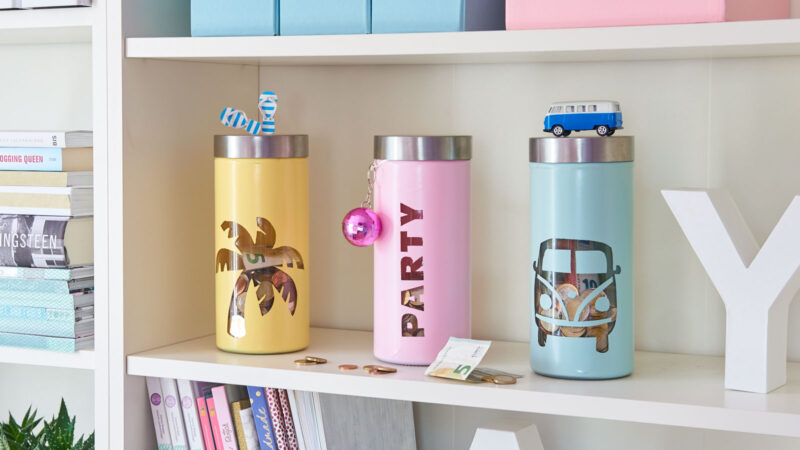
If you don’t have any extra change, marbles may be used to fill your money jar. They, like coins, may aid in the visualization of progress.
When you transfer money from your checking account to your savings account, drop marbles into your savings jar. Decide how much money each stone is worth and place the figure in the jar.
Find a jar large enough to accommodate your cash objective. Each marble may be worth $10 if you require $500. You’ve achieved your objective when you’ve filled your container with 50 marbles.
You may put anything in your container to help you visualize your progress. Gumballs, cotton balls, thumbtacks, and Hershey kisses are all acceptable substitutes.
On the outside of the jar, write the total. Keep track of how much money you’ve saved and how much time you have left.
Why can’t you use a spreadsheet with a bank account? What is the purpose of a money jar? Of course, you don’t need a money jar, but images may be more motivating and enjoyable.
Money jars are a fun method to get you to save money, and the more you like it, the simpler it will be.
Challenge of the $5 Savings Jar
Choose the most effective method of saving. A challenge excites some individuals. Others would rather throw their extra pennies into the money jar at the end of the day.
Try the $5 savings jar challenge if you like a good challenge. Simply toss $5 dollars into a savings jar whenever you come across one in your wallet.
If $5 seems too little, try $10 or $20; if $10 or $20 seems too big, try $1 bills. It all depends on how comfortable you are with paying off those debts while still keeping up with your other responsibilities.
Consider where you can save money in order to fill the jar. What things in your budget can you eliminate? Is there anything you won’t miss after you’ve stopped paying for it?
The 52-Week Savings Jar Challenge is a 52-week savings challenge.
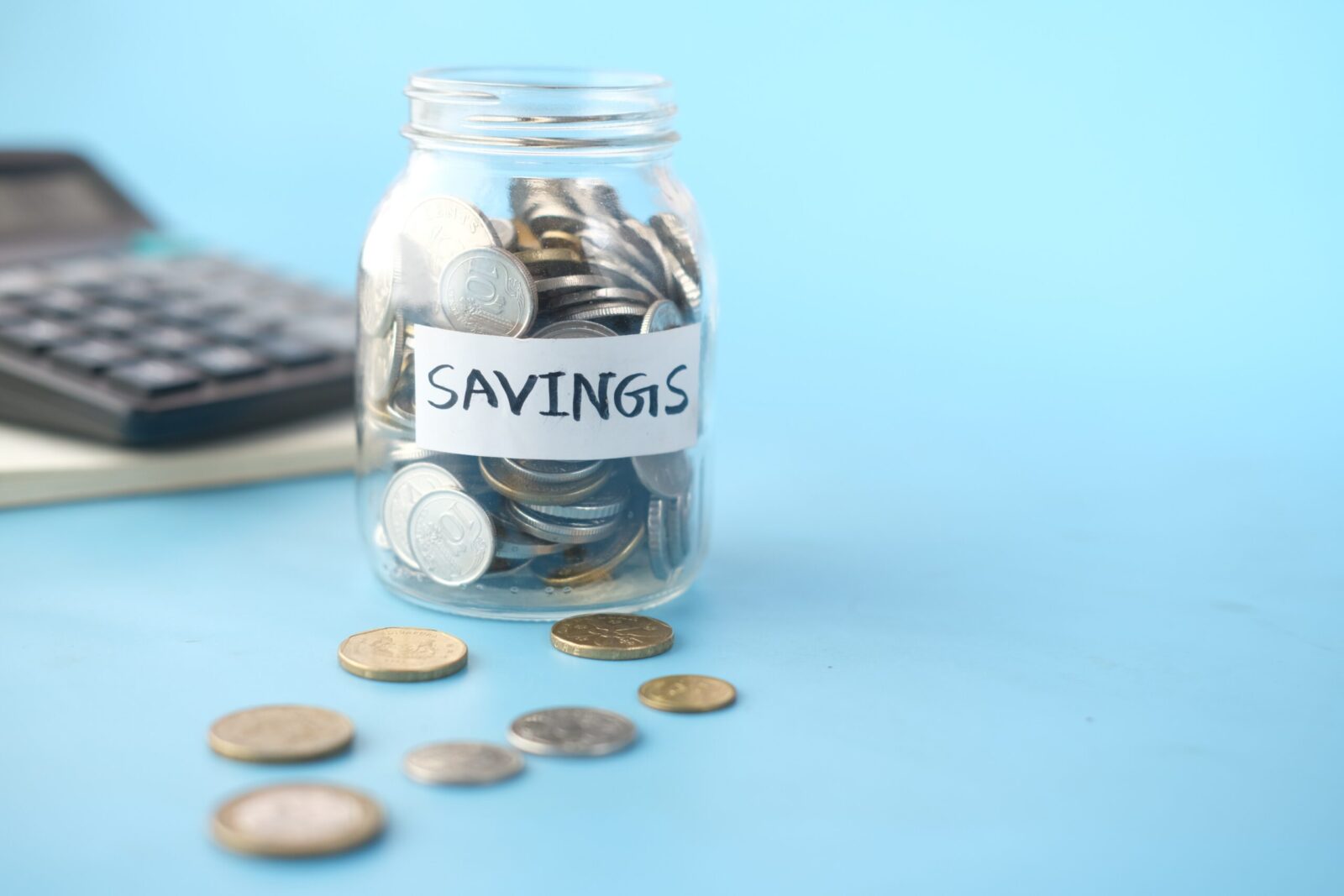
Another enjoyable method to save money is to participate in the 52-week savings jar challenge. You save $1 for the first week. You save $2 the next week. This pattern will continue until you reach week 52.
You are not need to follow the sums in any particular sequence. If you have any extra money from eBay sales one week, save it. Putting money away relieves the stress of another week when you may be short on cash.
Saving $1 or $2 isn’t tough, but you’ll need to save $49, $50, $51, and $52 before the challenge is through.
You’ll save $1,378 by the conclusion of the 52-week savings jar challenge.
Ideas for Savings Jars
Savings jars may help you make a long-term financial plan, but that doesn’t mean you can’t have some fun with them as well. Savings jars may also be used as a way to indulge.
Write FUN on the side of your jar if you don’t have a particular aim in mind. Then use the money to meet up with friends, take a lesson on the spur of the moment, or go to a performance as soon as tickets become available.
You are not need to set aside all of your funds for particular purchases or activities. It’s OK to just have a good time with it. If you choose to spend your money this way, you aren’t any less deliberate with it.
Last Thoughts
Start with modest sums if you’re new to making money jars. You may need to concentrate on frugality at first, but as your savings grow, you may shift your emphasis to earning more.
Praise yourself for safeguarding and caring for your future self each time you put money in a jar. Continue to deposit coins and capitalize on the enthusiasm and momentum you’re experiencing.
Use that energy to study more about increasing your income and investing your savings.
Saving money in a jar is a great way to encourage saving. The money saving jar ideas are challenges that can be set up to help people save more money.
Frequently Asked Questions
How can I save money faster in a jar?
You can save money faster by buying a jar and filling it with change.
What are the challenges of saving money?
Money is a difficult thing to save. It requires discipline, planning, and hard work to save money.
What is the most challenging part of saving money?
The most challenging part of saving money is to find ways to cut spending and not feel like youre sacrificing quality of life.
Related Tags
- 6 month savings challenge
- money saving challenge $10,000
- money saving challenge monthly
- saving challenge printable
- savings jar for adults
